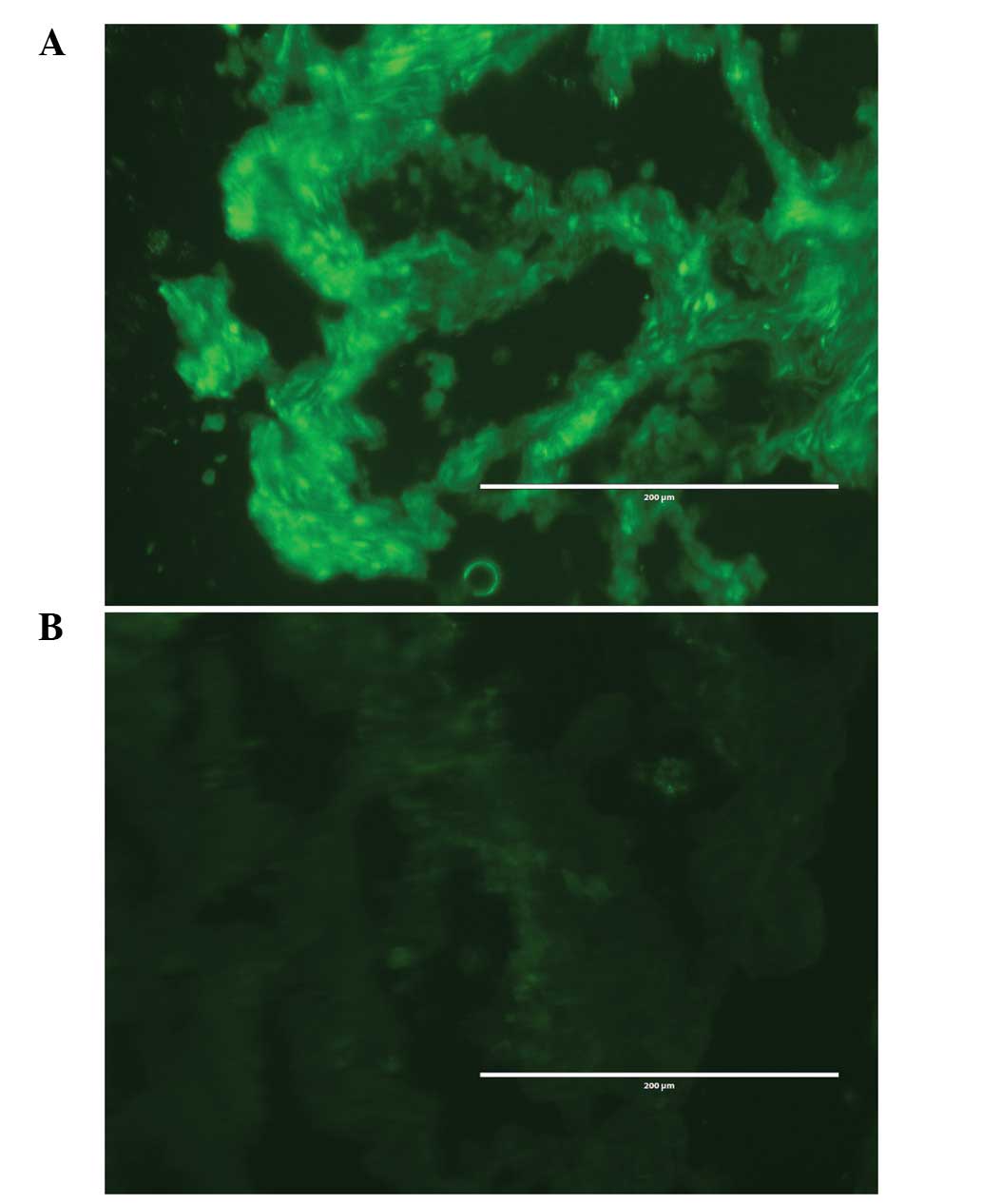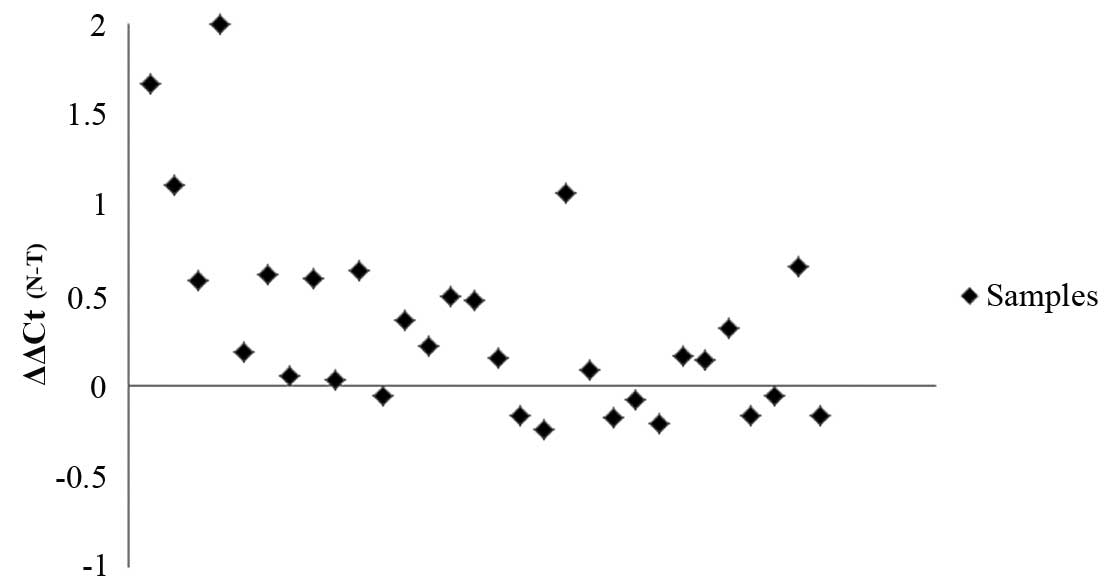|
1
|
Panda S, Hogenesch JB and Kay SA:
Circadian rhythms from flies to human. Nature. 417:329–335. 2002.
View Article : Google Scholar : PubMed/NCBI
|
|
2
|
Chen-Goodspeed M and Lee CC: Tumor
suppression and circadian function. J Biol Rhythms. 22:291–298.
2007. View Article : Google Scholar
|
|
3
|
Ko CH and Takahashi JS: Molecular
components of the mammalian circadian clock. Hum Mol Genet.
15:R271–277. 2006. View Article : Google Scholar : PubMed/NCBI
|
|
4
|
Krugluger W, Brandstaetter A, Kállay E, et
al: Regulation of genes of the circadian clock in human colon
cancer: reduced period-1 and dihydropyrimidine dehydrogenase
transcription correlates in high-grade tumors. Cancer Res.
67:7917–7922. 2007. View Article : Google Scholar
|
|
5
|
Wang Y, Hua L, Lu C and Chen Z: Expression
of circadian clock gene human Period2 (hPer2) in human colorectal
carcinoma. World J Surg Oncol. 9:1662011. View Article : Google Scholar : PubMed/NCBI
|
|
6
|
Hoffman AE, Yi CH, Zheng T, et al: CLOCK
in breast tumorigenesis: genetic, epigenetic, and transcriptional
profiling analyses. Cancer Res. 70:1459–1468. 2010. View Article : Google Scholar : PubMed/NCBI
|
|
7
|
Alhopuro P, Björklund M, Sammalkorpi H, et
al: Mutations in the circadian gene CLOCK in colorectal cancer. Mol
Cancer Res. 8:952–960. 2010. View Article : Google Scholar : PubMed/NCBI
|
|
8
|
Oshima T, Takenoshita S, Akaike M, et al:
Expression of circadian genes correlates with liver metastasis and
outcomes in colorectal cancer. Oncology reports. 25:1439–1446.
2011. View Article : Google Scholar : PubMed/NCBI
|
|
9
|
Zheng S and Cai SR: Colorectal cancer
epidemiology and prevention study in China. Chinese-German J Clin
Oncol. 2:72–75. 2003. View Article : Google Scholar
|
|
10
|
Siegel R, Ward E, Brawley O and Jemal A:
Cancer statistics, 2011: the impact of eliminating socioeconomic
and racial disparities on premature cancer deaths. CA Cancer J
Clin. 61:212–236. 2011. View Article : Google Scholar : PubMed/NCBI
|
|
11
|
Zheng S and Cai SR: Colorectal cancer
epidemiology and prevention study in China. Chinese-German J Clin
Oncol. 2:72–75. 2003. View Article : Google Scholar
|
|
12
|
Zhang EE, Liu AC, Hirota T, et al: A
genome-wide RNAi screen for modifiers of the circadian clock in
human cells. Cell. 139:199–210. 2009. View Article : Google Scholar : PubMed/NCBI
|
|
13
|
Scheving LA: Biological clocks and the
digestive system. Gastroenterology. 119:536–549. 2000. View Article : Google Scholar
|
|
14
|
Reppert SM and Weaver DR: Coordination of
circadian timing in mammals. Nature. 418:935–41. 2002. View Article : Google Scholar : PubMed/NCBI
|
|
15
|
Hirota T and Fukada Y: Resetting mechanism
of central and peripheral circadian clocks in mammals. Zoolog Sci.
21:359–68. 2004. View Article : Google Scholar : PubMed/NCBI
|
|
16
|
Innominato PF, Focan C, Gorlia T, et al:
Circadian rhythm in rest and activity: a biological correlate of
quality of life and a predictor of survival in patients with
metastatic colorectal cancer. Cancer Res. 69:4700–4707. 2009.
View Article : Google Scholar : PubMed/NCBI
|
|
17
|
Block KI, Block PB, Fox SR, et al: Making
circadian cancer therapy practical. Integr Cancer Ther. 8:371–386.
2009. View Article : Google Scholar : PubMed/NCBI
|
|
18
|
Gekakis N, Stakins D, Nguyen HB, et al:
Role of the CLOCK protein in the mammalian circadian mechanism.
Science. 280:1564–1569. 1998. View Article : Google Scholar : PubMed/NCBI
|
|
19
|
Matsuo T, Yamaguchi S, Mitsui S, Emi A,
Shimoda F and Okamura H: Control mechanism of the circadian clock
for timing of cell division in vivo. Science. 302:255–259. 2003.
View Article : Google Scholar : PubMed/NCBI
|
|
20
|
Fu L, Pelicano H, Liu J, Huang P and Lee
C: The circadian gene Period2 plays an important role in tumor
suppression and DNA damage response in vivo. Cell. 111:41–50. 2002.
View Article : Google Scholar : PubMed/NCBI
|
|
21
|
Polidarová L, Soták M, Sládek M, Pacha J
and Sumová A: Temporal gradient in the clock gene and cell-cycle
checkpoint kinase Weel expression along the gut. Chronobiol Int.
26:607–620. 2009.PubMed/NCBI
|
|
22
|
Gery S and Koeffler HP: The role of
circadian regulation in cancer. Cold Spring Harb Symp Quant Biol.
72:459–464. 2007. View Article : Google Scholar
|
|
23
|
Park JE, Lee DH, Lee JA, Park SG, Kim NS,
Park BC and Cho S: Annexin A3 is a potential angiogenic mediator.
Biochem Biophys Res Commun. 337:1283–1287. 2005. View Article : Google Scholar : PubMed/NCBI
|
|
24
|
Chau NM, Rogers P, Aherne W, et al:
Identification of novel small molecule inhibitors of
hypoxia-inducible factor-1 that differentially block
hypoxia-inducible factor-1 activity and hypoxia-inducible
factor-1alpha induction in response to hypoxic stress and growth
factors. Cancer Res. 65:4918–4928. 2005. View Article : Google Scholar
|












